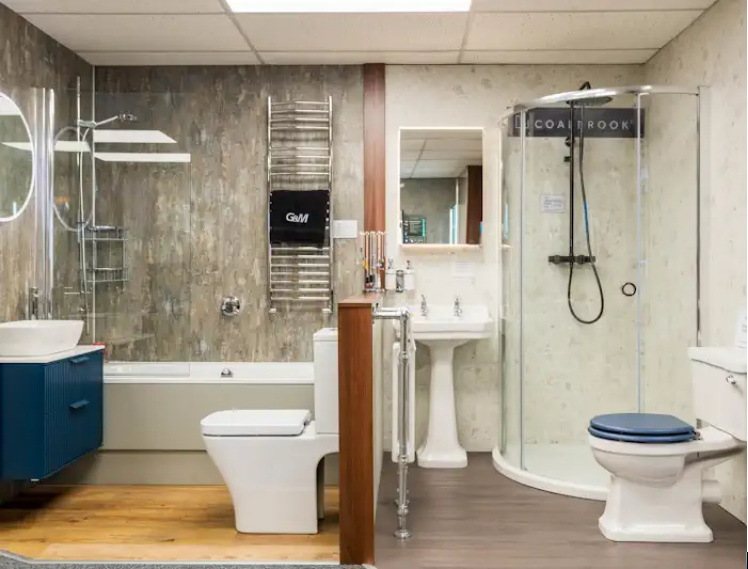Keeping It Clean: The Essential Guide To Sanitary Napkin Receptacles

Key Takeaways:
- Sanitary napkin receptacles are important for maintaining hygiene, preventing infections, reducing odor, and promoting feminine health and confidence.
- Proper disposal of sanitary napkins in dedicated receptacles helps prevent the spread of bacteria and germs.
- Sanitary napkin receptacles with odor control features minimize unpleasant smells in restrooms.
- Having sanitary napkin receptacles creates a more inclusive and accommodating restroom environment for women.
- Consider design, capacity, odor control features, and easy maintenance when choosing a sanitary napkin receptacle.
- Place receptacles in easily accessible locations within the restroom, near toilet cubicles.
- Choose wall-mounted or freestanding options based on restroom layout and space availability.
- Ensure accessibility and privacy by installing receptacles at reachable heights and using privacy panels.
- Regular cleaning and maintenance, including emptying, sanitizing, and replacing liner bags, are necessary.
- Use cleaning products specifically formulated for removing stains, odors, and germs.
- Address any unexpected issues with receptacles promptly by contacting the manufacturer or supplier.
- The Importance of Sanitary Napkin Receptacles
A sanitary napkin receptacle may seem like a small and insignificant addition to a restroom, but its importance should not be underestimated. These receptacles play a crucial role in maintaining hygiene and preventing infections, reducing odor and discomfort, and promoting feminine health and confidence.
1.1 Maintaining Hygiene and Preventing Infections
Proper disposal of sanitary napkins is essential to maintain cleanliness and prevent infections. When used sanitary napkins are discarded without a designated receptacle, they often end up in trash cans or flushed down toilets, causing blockages and unsanitary conditions. This can lead to the spread of bacteria and germs, increasing the risk of infections.
Sanitary napkin receptacles provide a dedicated space for the disposal of used pads, ensuring that they are properly contained and do not come into contact with other surfaces or items. They are designed with features such as a tight-sealing lid and a liner bag that prevents odors from escaping and minimizes exposure to germs.
By encouraging the use of sanitary napkin receptacles, you can help maintain a clean and hygienic restroom environment, reducing the risk of infections and promoting overall well-being.
1.2 Reducing Odor and Discomfort
One of the biggest challenges in restrooms is managing the odor associated with discarded menstrual products. When sanitary napkins are not disposed of properly, they can emit a strong and unpleasant odor that can linger in the air. This can cause discomfort for restroom users, creating an unpleasant experience.
A sanitary napkin receptacle with odor control features can significantly reduce these unpleasant odors. Some receptacles use advanced sealing mechanisms, such as double-sealing lids, to lock in odors effectively. Additionally, the use of scented liners or odor-neutralizing agents can further minimize any unwanted smells.
By choosing the right sanitary napkin receptacle with odor control features, you can create a more pleasant and comfortable restroom environment for users.
1.3 Promoting Feminine Health and Confidence
Providing sanitary napkin receptacles in restrooms goes beyond just maintaining hygiene and reducing odors. It also plays a crucial role in promoting feminine health and confidence.
When women have access to a clean and private space to dispose of their sanitary napkins, they feel more confident and empowered. It eliminates the need for discreetly wrapping and carrying used pads, which can be embarrassing or uncomfortable for many women.
In addition, having sanitary napkin receptacles readily available sends a clear message of inclusivity and respect for all restroom users. It acknowledges the unique needs of women and helps create a more inclusive and accommodating environment.
- Choosing the Right Sanitary Napkin Receptacle
Choosing the right sanitary napkin receptacle involves considering various factors such as design and capacity, odor control features, and easy maintenance and disposal methods.
2.1 Considering Design and Capacity
The design of a sanitary napkin receptacle should align with the overall aesthetics of the restroom while being functional and practical. It should blend in seamlessly with the surrounding decor and not draw attention to itself.
When selecting a receptacle, it is essential to consider its capacity. The receptacle should be able to accommodate the expected volume of waste without requiring frequent emptying, which can be inconvenient and time-consuming.
Some receptacles come in different sizes, allowing you to choose the one that best suits your restroom’s needs. Larger capacity receptacles are suitable for high-traffic areas, while smaller ones may be more suitable for less frequented restrooms.
2.2 Exploring Odor Control Features
Odor control features are a crucial consideration when choosing a sanitary napkin receptacle. Look for receptacles that use advanced sealing mechanisms to lock in odors effectively. Some receptacles also offer scented liners or odor neutralizers to further minimize any unpleasant smells.
It is important to choose a receptacle with odor control features that are effective and long-lasting. Regular maintenance, such as emptying and cleaning the receptacle, will also contribute to reducing odors.
2.3 Evaluation of Easy Maintenance and Disposal Methods
Easy maintenance and disposal methods are essential for ensuring that sanitary napkin receptacles are used consistently and correctly.
Consider receptacles with liner bag systems that allow for easy removal and replacement of liners. This simplifies the cleaning process and reduces the risk of spills or leaks during disposal.
Some receptacles also have indicator systems that visually signal when the receptacle is full and needs emptying. This helps in maintaining proper hygiene by preventing overflow and ensuring timely emptying.
- Installation and Placement Tips
The location and placement of sanitary napkin receptacles play a crucial role in their effectiveness and usability.
3.1 Ideal Locations for Sanitary Napkin Receptacles
Sanitary napkin receptacles should be placed in easily accessible locations within the restroom. Consider placing them near toilet cubicles to ensure convenience and privacy for users.
It is also recommended to have multiple receptacles in larger restrooms or high-traffic areas to accommodate the needs of all users. This helps in reducing waiting times and prevents the overflow of waste.
3.2 Wall-mounted vs. Freestanding Options
When choosing between wall-mounted and freestanding options, consider the layout and available space in your restroom.
Wall-mounted receptacles are a space-saving option and can be installed at a convenient height near the toilet cubicles. They are securely attached to the wall, minimizing the risk of tipping or damage.
Freestanding options, on the other hand, provide flexibility in placement and can be easily moved or repositioned as needed. They are suitable for restrooms with limited wall space or where wall installation is not possible.
3.3 Ensuring Accessibility and Privacy
Accessibility and privacy are essential considerations when it comes to the placement of sanitary napkin receptacles.
Ensure that the receptacles are installed at a height that is easily reachable for all users, including those with disabilities. This promotes inclusivity and ensures equal access to proper disposal facilities.
Additionally, consider the privacy of users by placing the receptacles in discreet locations or using privacy panels to shield them from direct view.
- Proper Cleaning and Maintenance
Maintaining clean and well-maintained sanitary napkin receptacles is crucial for their effectiveness and longevity.
4.1 Regular Cleaning Procedures
Regular cleaning of sanitary napkin receptacles is essential to prevent the buildup of odors and maintain hygiene. Establish a cleaning routine that includes emptying the receptacles, removing and replacing liner bags, and sanitizing the receptacle surfaces.
It is recommended to clean the receptacles at least once a day, or more frequently in high-traffic restrooms. Use mild cleaning solutions and disinfectants that are safe for the materials of the receptacle.
4.2 Recommended Cleaning Products
When selecting cleaning products for sanitary napkin receptacles, choose those specifically formulated for removing stains, odors, and germs while being safe for the materials.
Look for products that contain disinfectant properties and are effective against a wide range of bacteria and viruses. Avoid using harsh chemicals that can damage the receptacle and cause irritation to users.
4.3 Dealing with Unexpected Issues
Despite regular cleaning and maintenance, unexpected issues may arise with sanitary napkin receptacles. Addressing these issues promptly is essential to ensure that the receptacles continue to function effectively.
If a receptacle becomes damaged or malfunctions, contact the manufacturer or supplier to assess the issue and arrange for repairs or replacements as necessary. Regular inspections and maintenance will help identify any potential issues early on and prevent larger problems from occurring.
Remember, maintaining sanitary napkin receptacles is an ongoing process that requires attention and care. By prioritizing cleanliness and regular maintenance, you can ensure that the receptacles serve their purpose effectively and contribute to a clean and hygienic restroom environment.
FAQ
Q: Why are sanitary napkin receptacles important? A: Sanitary napkin receptacles play a crucial role in maintaining hygiene and preventing infections, reducing odor and discomfort, and promoting feminine health and confidence.
Q: How do sanitary napkin receptacles maintain hygiene and prevent infections? A: Sanitary napkin receptacles provide a dedicated space for the disposal of used pads, ensuring that they are properly contained and do not come into contact with other surfaces or items. This helps prevent the spread of bacteria and germs, reducing the risk of infections.
Q: How do sanitary napkin receptacles reduce odor and discomfort? A: Sanitary napkin receptacles with odor control features lock in odors effectively and may use scented liners or odor-neutralizing agents to minimize unpleasant smells.
Q: How do sanitary napkin receptacles promote feminine health and confidence? A: Providing sanitary napkin receptacles in restrooms eliminates the need for discreetly wrapping and carrying used pads, which can be embarrassing or uncomfortable for many women. It also creates a more inclusive and accommodating environment, acknowledging the unique needs of women.
Q: What factors should be considered when choosing a sanitary napkin receptacle? A: Design and capacity, odor control features, and easy maintenance and disposal methods should be considered when choosing a sanitary napkin receptacle.
Q: Where should sanitary napkin receptacles be placed? A: Sanitary napkin receptacles should be placed in easily accessible locations within the restroom, preferably near toilet cubicles for convenience and privacy.
Q: Should I choose a wall-mounted or freestanding sanitary napkin receptacle? A: The choice between wall-mounted and freestanding options depends on the layout and available space in your restroom. Wall-mounted receptacles are space-saving and secure, while freestanding options offer flexibility in placement.
Q: How should sanitary napkin receptacles be cleaned and maintained? A: Regular cleaning includes emptying the receptacles, removing and replacing liner bags, and sanitizing the receptacle surfaces. Use mild cleaning products specifically formulated for removing stains, odors, and germs. Promptly address any unexpected issues by contacting the manufacturer or supplier.
Useful Resources:
- https://www.womenshealth.gov/ – Official website of the U.S. Department of Health & Human Services, providing educational resources on women’s health topics.
- https://www.plannedparenthood.org/ – Planned Parenthood offers comprehensive information on reproductive health, including menstrual hygiene and disposal.
- https://www.cdc.gov/ – Official website of the Centers for Disease Control and Prevention, providing guidelines and resources on sanitary practices and infection prevention.
- https://www.mayoclinic.org/ – Mayo Clinic provides reliable information on various health topics, including feminine health and hygiene.
- https://kidshealth.org/ – KidsHealth offers easy-to-understand educational resources for parents and children, including information on puberty and personal hygiene.
- https://www.nwhn.org/ – National Women’s Health Network advocates for women’s health issues and provides educational resources on various topics.
- https://www.ncbi.nlm.nih.gov/ – The National Center for Biotechnology Information provides access to scientific research articles on women’s health and hygiene.
- https://www.publichealth.org/ – PublicHealth.org offers resources and information about public health, including menstrual hygiene and sanitation.







